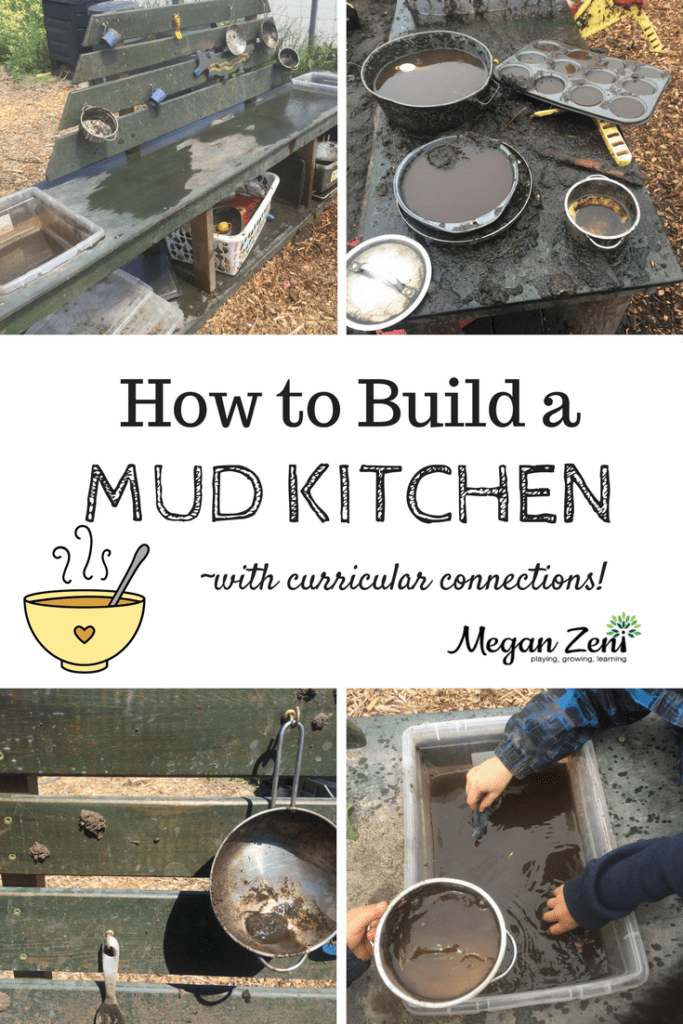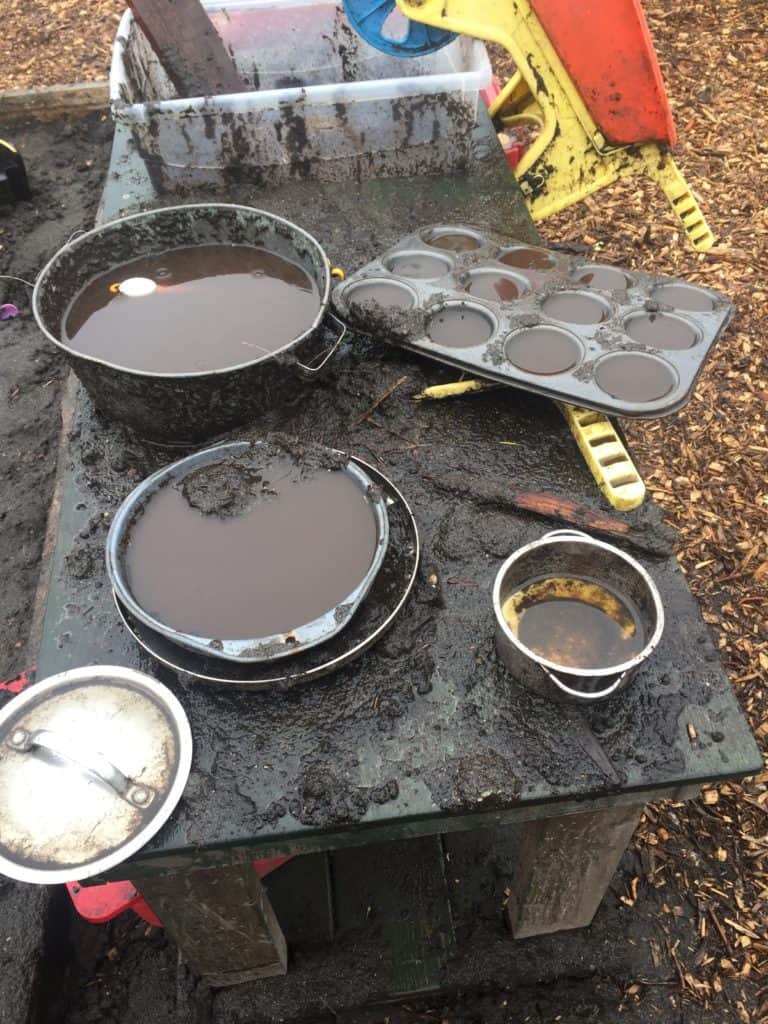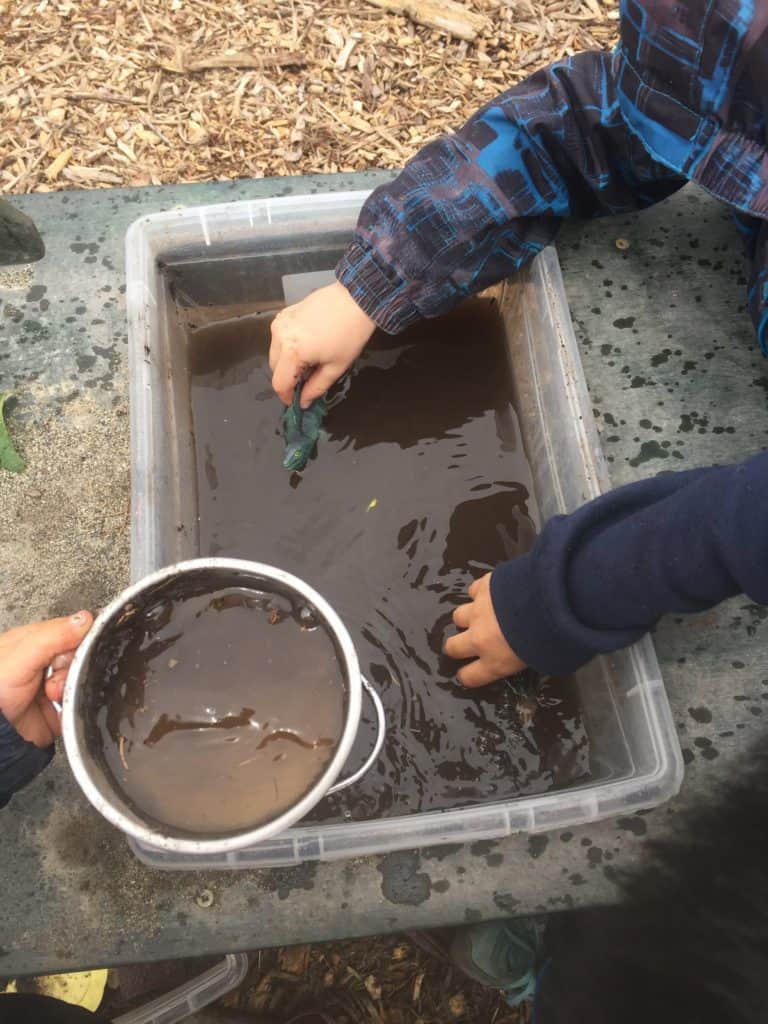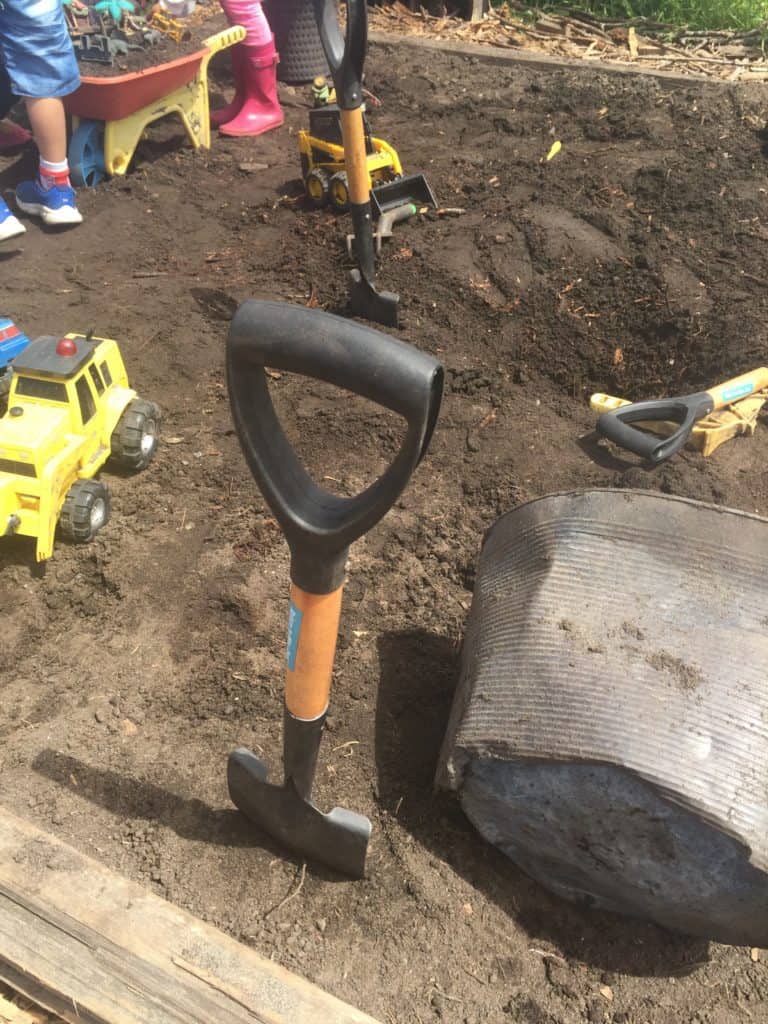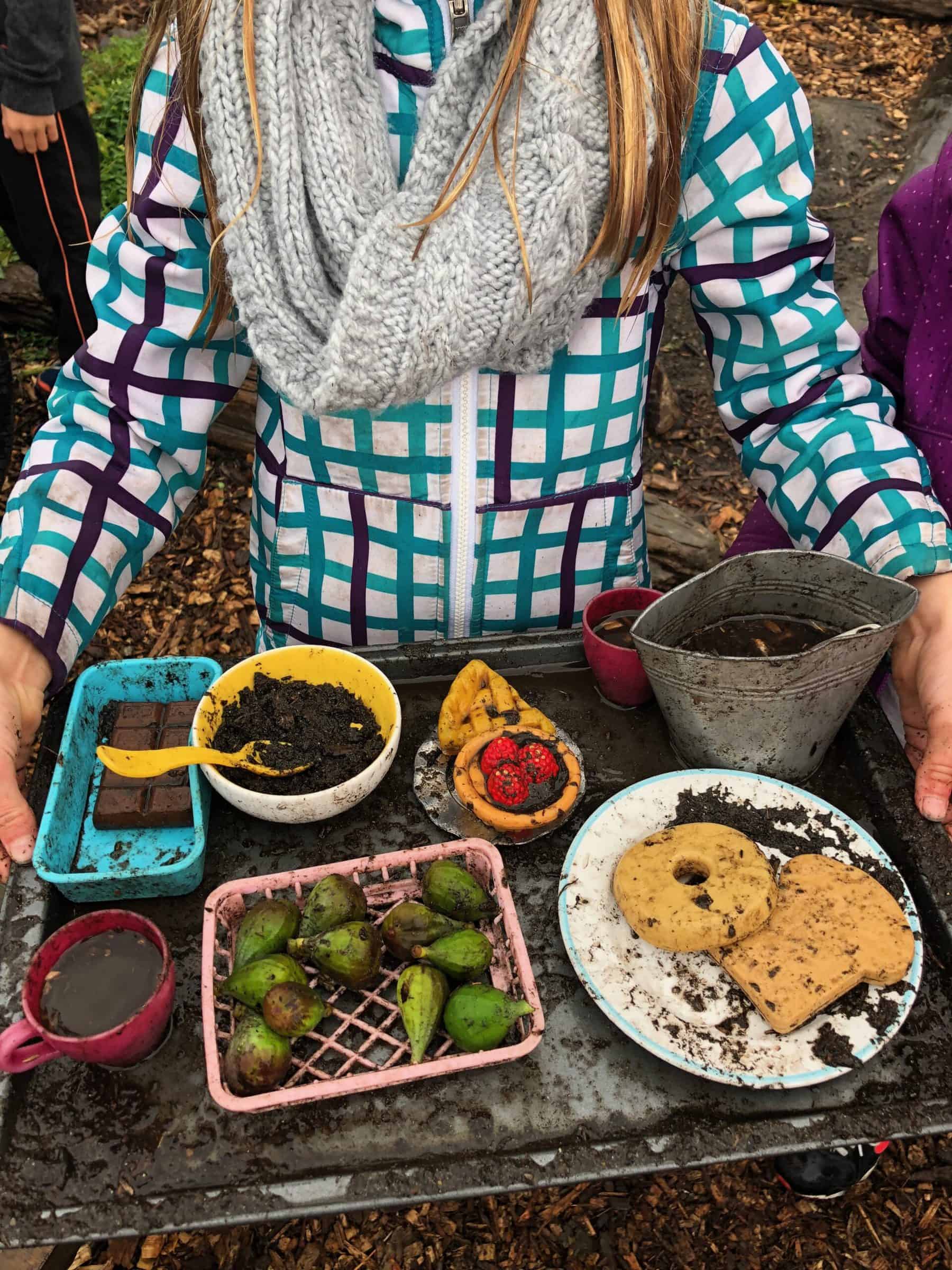Kids Getting Dirty! How To Build A Mud Kitchen
International Mud Day is June 29th this year, and if you are going to have a garden with kids, it makes sense to have a mud kitchen. Not only is a mud kitchen the perfect space for learning math and science, it also meets many of the sensorial needs of children in a wonderfully satisfying way.
Mud kitchens seem like they might be a disaster in school gardens, but they really add tremendous value to the garden play and, with clear expectations around use of mud and water, are an essential part of any children’s garden play space. If you are looking for a way to celebrate International Mud Day, then read on for my curricular connections and top tips on how to build a mud kitchen. You can also get more rainy day play ideas that include mud here.
Organizing Mud Kitchens
Your mud kitchen is going to get messy. Very, very messy. You won’t want to be constantly cleaning it up or the fun will be gone before it begins, so plan from the beginning to have open storage that everything can be easily dumped into. I use old laundry hampers to hold all the loose parts, and built the mud kitchen to accommodate the hampers on the bottom shelf. Simply dump the muddy bits and pieces into the bins at clean up time and hose off the surface for a fresh start!
It also helps to have hooks where kitchen tools can be hung to dry and for easy access. Kitchen tools that are buried in the mud caked pans are harder to find and less appealing to use. Be sure to have large mixing pots, or an old free standing sandbox that can be used to mix the mud in.
Having a table and chairs, or simply some wood stumps and a flat log for a makeshift service table allows children to extend the role play into the service aspects of the mud kitchen. When planning your kitchen, consider how many children will be using the area at one time to allow for unrestricted movement around the kitchen. Ours is laid out in an open U shape and 12-15 children can comfortably play there at one time.
A Mud Kitchen Needs Loose Parts
It is important that your kitchen is well stocked, and not with flimsy plastic play kitchen stuff. I’m talking about real muffin tins, cookie trays and pots and pans. Using real kitchen tools like colanders, spatulas, and measuring cups makes the play more authentic and saves you the hassle of having to replace pieces and parts that are not durable enough for mud kitchen playtime. Check online and at thrift stores for dinted and tossed out kitchen gear that is perfect for mud kitchen play.
A Mud Kitchen Needs A Water Source
If you are going to have a mud kitchen, you are going to need to have a water source. I chose to NOT have a running sink installed in our school-yard mud kitchen simply to avoid the overflow and waste of water that would come with unlimited access to water. Instead, I had three sinks installed in the kitchen that are easily filled by the hose. Each class gets three sinks full of water to work with during their hour of play and it seems to work out fine. I’m happy to re-fill as required, but this awareness around water conservation is important and part of the learning process. If you are setting up a kitchen for fewer children, then having an authentic sink with working taps would be recommended.
A Mud Kitchen Needs A Mud Source
If you are going to have a mud kitchen you are going to need to have a source of dirt that doesn’t include digging up your garden beds. Our dig pit was the solution to kids digging out shovels full of dirt from the garden beds. Locate your dig pit as close as possible to your kitchen to keep the dirt in play as much as possible.
The Benefits of Mud Kitchen Play
There are many ways children benefit from the unstructured play a mud kitchen provides. Co-operation, problem solving and divergent thinking are all further developed in the mud kitchen. Unstructured nature play has been shown to reduce stress and anxiety in children and playing with hands-in-the-mud has been shown to release bacterium from the soil that has a positive effect on mental health. If that isn’t enough to convince you, studies are proving a high correlation between dirt play and increased immune systems. Mud kitchens are the perfect place to provide play opportunities for happier and healthier kids!
Literacy Connections
Mud kitchens can be installed with a chalkboard for displaying menu options or laminated menus for role play. Shopping lists and other emergent writing opportunities can be developed with mud kitchen play. Story-telling, role-play and creative invention of foods and recipes can all provide hours of literacy building.
Science Connections
The viscosity of mud is impacted by the ratio of mud to water. Solutions and solubility are learned authentically in a mud kitchen. Children will naturally explore the variety of textures and consistencies the mud kitchen presents depending on the weather and the mixtures they create. Mud and water play allow for an excellent opportunity to explore properties of matter, water conservation and an interest in the water cycle.
Teaching our children to care for and love the earth begins with them having actual experiences with the planet we call home. We can’t expect a generation of children to grow up willing to protect the planet if they have no fond memories of playing in the dirt. Mud kitchens allow for children to connect with nature at their own pace and in a playful way.
Mud Kitchen Resources
You can pick up a free Kindle edition of Mud Kitchen In A Day here
You can download free mud kitchen menus and templates here
You can download mud activities here
And I’d love to have you join my Pinterest board on mud kitchens here:

